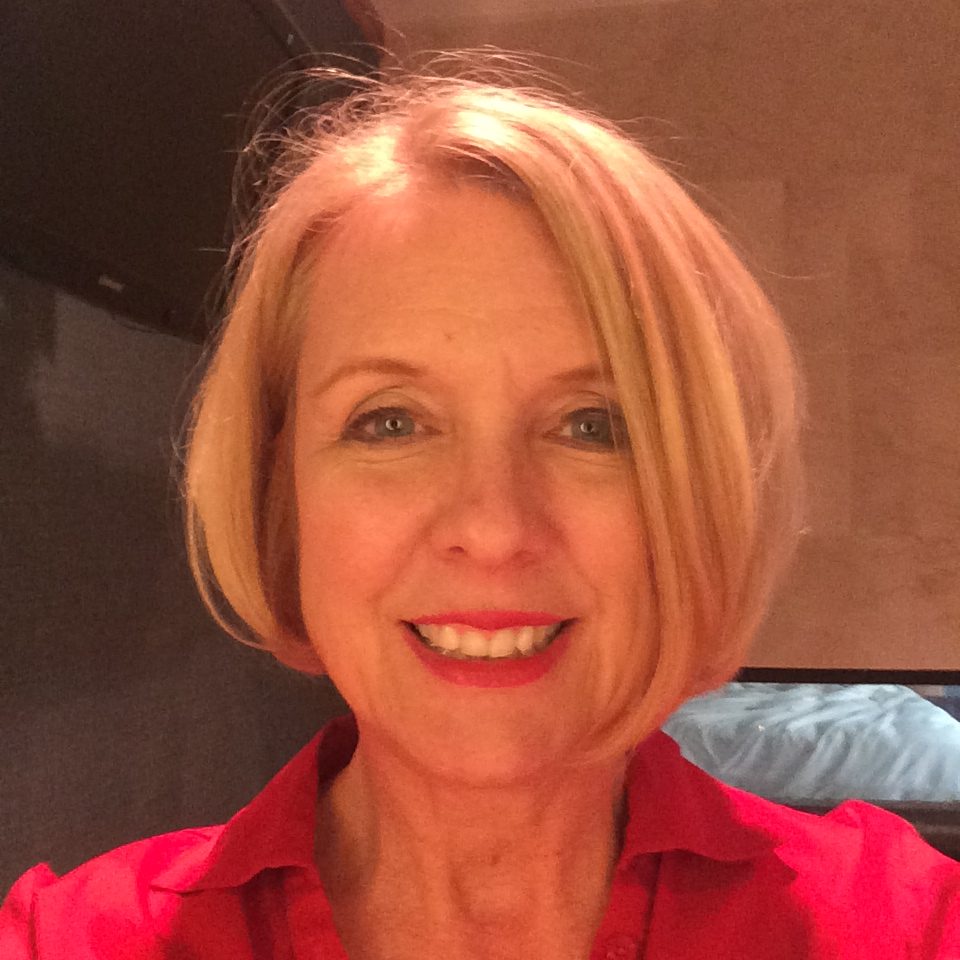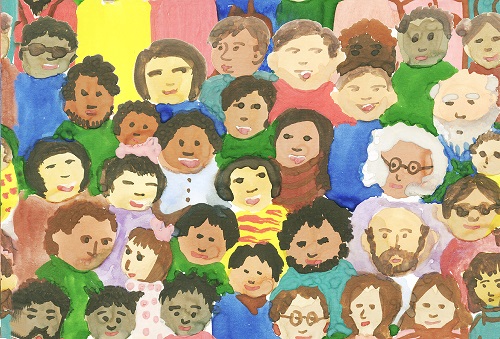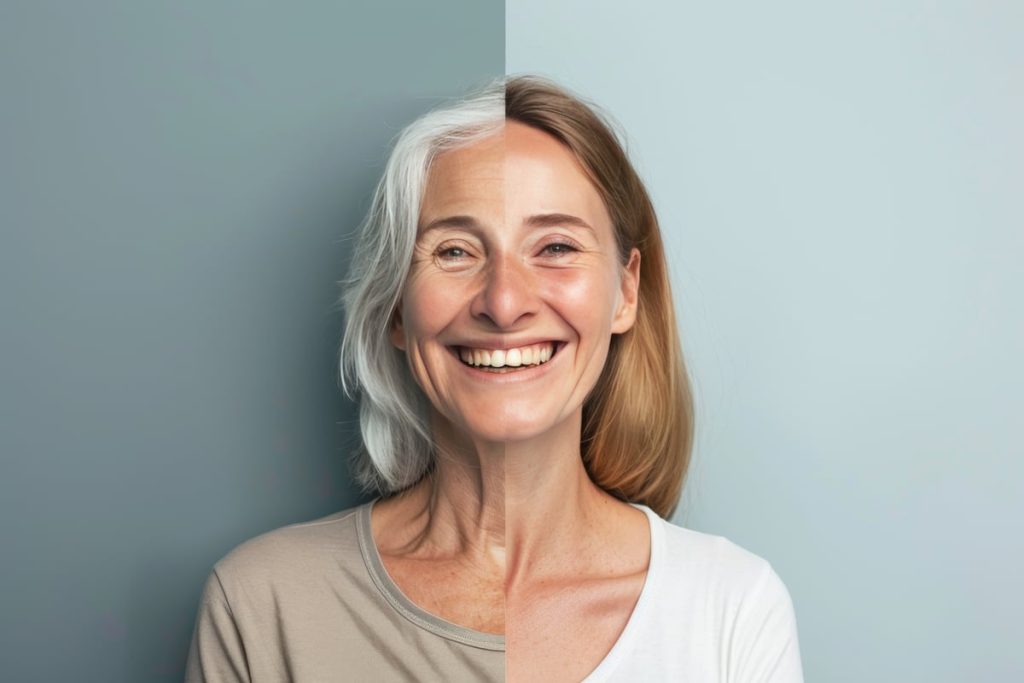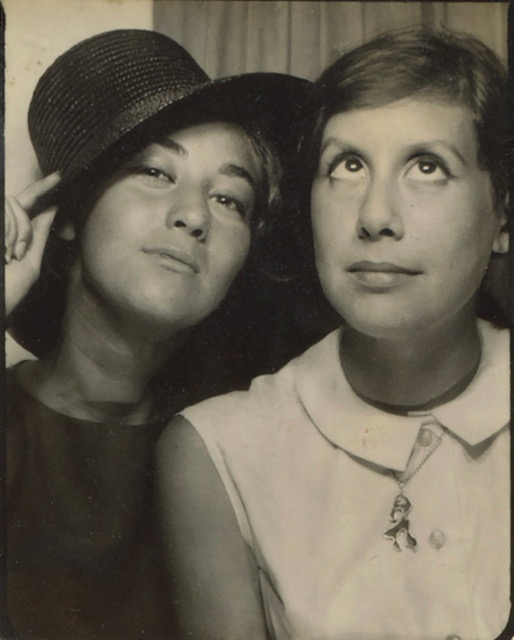Art Russell, 60, counts at least a dozen 20-somethings as friends: the guys he fences with; a 26-year-old colleague at work; and several people who attend his church. Although he also has many friends his own age, Russell values those younger ones.
“They have a fresh perspective that reminds me to stay enthusiastic about life,” he said.
Unfortunately, Russell’s social circle is unusual.
According to a 2017 report by Generations United and the Eisner Foundation, most Americans rarely have meaningful interactions or conversations with others (not family members) who are 20 or more years younger or older.
“Intergenerational friendships are the exception rather than the rule: for the most part, age segregation prevails,” the report concluded.
Most of us live in age bubbles. People tend to socialize within their own age groups at work or in school. Families with young children flock to kid-friendly neighborhoods; young adults head to apartments and condos in trendy locations; older adults whose children have grown gravitate to retirement communities.
Even multigenerational settings—such as churches, synagogues or community centers—tend to tailor programming by age: a yoga class for seniors; a Bible study for young adults; a science camp for kids. As a result, most of us have few opportunities to make friends with people outside of our own age groups.
“All of this is counter to what we know about what people need to thrive developmentally,” according to Eunice Lin Nichols, vice president at Encore.org and director of Gen2Gen, a campaign to encourage intergenerational connections. “Experts agree that age segregation contributes to social isolation and can reinforce stereotypes and perpetuate ageism.”
Friendship Transcends Age
When Mary Ann Eaton, 91, broke her hip in early 2018, she hired Diane Cannon, 60, to drive her around and to help with chores while she recovered. The two women became fast friends; now they talk by phone at least once a day and get together often. The 31-year age difference seems irrelevant.
“It’s very easy to talk to Diane,” Eaton said. “We have the same sense of humor, we both love animals and we’re both hard workers.” (One of Eaton’s first requests was for Cannon to drive her to a class to keep her real estate license up to date.)
If more older people made younger friends, experts believe that could help address a number of concerns related to the aging of the US population. Intergenerational friendships might counteract the “loneliness epidemic” that was identified in a 2018 Cigna survey of more than 20,000 Americans over age 18. Nearly half of respondents reported sometimes or always feeling alone (46 percent) or left out (47 percent).
…millennials are awesome. Almost none of the young people I know fit the stereotypes.
— Art Russell, age 60
Older people tend to stay healthier, both physically and cognitively, when they have strong social connections. (One study showed that loneliness has an impact on mortality similar to smoking 15 cigarettes a day.) Also, when elders nurture friendships with younger people, it helps assure that those who live into their 80s and 90s can maintain a vibrant social life even if they outlive their peers.
Another advantage: intergenerational friendships promote mutual learning and enrichment and dispel ageist stereotypes. Even though he works in tech himself, Art Russell’s younger friends have tipped him on a couple of useful smartphone apps that he uses every day. When asked, he’s been able to offer them advice on relationships and careers.
“And I think millennials are awesome,” he said. “Almost none of the young people I know fit the stereotypes.”
That’s a common side effect of intergenerational friendships—ageist stereotypes are quickly contradicted.
“If we get isolated by generation, we only talk about what’s relevant to our own generation,” said Donna Butts, executive director of Generations United. “We are richer and more able to look beyond our immediate concerns when we’re engaged with people in other age groups. To really slow down and listen—that’s how we share our humanity with each other.”
Friends Gone Viral
A man in New Jersey befriended a woman in Florida by way of Words with Friends, an online game. Normally, that wouldn’t make the news. But in this case, the man is a 22-year-old African American rapper and the woman is an 81-year-old white retiree. A photo of their first meet-up went viral on social media, and the story made the New York Times in 2017.
What would it take to make friendships like this more common, rather than a newsworthy rarity? A number of initiatives are connecting older and younger people:
- In Boston, a startup called Nesterly pairs older homeowners with young adults, especially students, who need housing. Housing is expensive in Boston, yet an estimated 90,000 spare bedrooms are going unused in the homes of aging empty nesters. The living arrangements have created friendships like that of Sarah Heintz, who’s in her 70s, and her roommate Dean Kaplan, 25. They share meals and enjoy talking politics.
- Judson Manor, a retirement community in University Circle in Cleveland, offers a handful of apartments at no cost to 20-something graduate students at the nearby Cleveland Institute of Music, in exchange for performing for the residents. Friendships naturally arose between the older residents and the students. Viola student Caitlyn Lynch became so close to 90-something resident Clara Catliota that she asked her to join her wedding party. Catliota couldn’t travel to Oregon for the ceremony, so she hosted a wedding celebration for the couple at Judson.
- A social services program called DOROT (which means “generations” in Hebrew) connects 7,000 children, teens and young adults with 3,000 older adults in New York City. The program enlists volunteers to serve as “friendly visitors” to isolated older adults, hosts intergenerational chess games and art sessions and provides opportunities for older adults to read to children. DOROT has sparked friendships like the one shared by Ramon Couzon, 78, and Vera Ruangtragool, 34. In 2015, Ruangtragool delivered a gift package from DOROT to Couzon shortly after his wife of 30 years died. He told Ruangtragool he was struggling with her loss; she responded by sharing how meditation had helped her find peace. Now, Ruangtragool visits Couzon weekly; the two chat before doing a 40-minute guided meditation. Both say they’re happier and more hopeful as a result of the friendship.
While programs like these can help connect people, experts say that awareness, an eye for shared interests and a little extra effort can lead to friendships that grow organically.
“It may start with something as simple as saying hello to your neighbor,” Butts said. “Everybody who lives in a neighborhood or an apartment building has the potential to have more interactions with people of other age groups.”
Intergenerational Collaboration
Intergenerational collaboration can also benefit organizations, Butts noted. Research shows that when teams involve people of different generations working together on an artistic or business project, they’re more productive and resourceful. Such collaboration can also spark intergenerational friendships.
That’s what happened when filmmakers Matt Starr, 29, and Ellie Sachs, 25, decided to remake the classic film Annie Hall with actors recruited from an older adult community, Lenox Hill Neighborhood House in New York. Starr and Sachs appreciated how the older actors consistently showed up on time early in the morning and were willing to work hard, even in hot weather. After the project ended, the young filmmakers and the elder actors continue to get together occasionally for lunch, a stroll in the park or even dance classes.
When young people don’t appreciate what older adults have to offer, Sachs said, “I think we just lose the potential to make incredible friends.”
Sachs said her new friends have shared guidance about love and life that she’s found more valuable than advice from her peers.
An intergenerational friendship has also enriched the lives of Courtney Cox and Carey Smith, both personally and professionally. In 2001, the two women started jobs in the same week in the art department of JCPenney. Cox was fresh out of school; Smith was returning to work after a hiatus to raise two kids. Despite the 27-year age difference, the two women made an immediate connection.
“If you’re creative, you tend to hang out with creative types,” Cox said. “I don’t notice the age difference. We have a lot of belly laughs. You don’t have that with everybody.”
Now, at 41 and 68 respectively, Cox and Smith have new employers and live in different cities but remain close friends. Recently, Cox needed graphic design help on a project for her current employer, so she hired Smith as a contractor. Smith traveled to North Carolina and stayed at Cox’s home during the three-month project. Cox said she often relies on Smith’s depth of experience, both in work and personal situations. Her older friend has faced some challenges—such as caring for a parent diagnosed with cancer—and was able to guide Cox when she faced the same situation with her own mother.
An intergenerational networking group in New York stages events that draw sold-out crowds.
That kind of mentoring doesn’t just benefit younger people; it also enriches the lives of the older people who serve as mentors. The Harvard Study of Adult Development, which has tracked more than 700 men over almost 80 years, found that those in middle age and beyond who invested in caring for and developing the next generation were three times as likely to be happy as those who did not do so.
“We were intended to live in community with one another, with older generations bringing wisdom, perspective and a lifetime of skills and experiences to younger generations, and younger generations bringing vitality and joy to the older generations,” said Nichols of Gen2Gen.
Younger people too see the need to tap into the wisdom of older adults. Charlotte Japp, 28, was “desperate” to connect with older mentors for advice on everything from maneuvering office politics to how to confront a manager about a difficult situation with a colleague. At the time, she was working at the online news site Vice; none of her colleagues were over 45. So Japp started CIRKEL, a networking platform that has organized a series of intergenerational events in New York that have drawn sold-out crowds.
Each event brings together older and younger people in a particular industry for informal mingling and structured discussions. A networking night for fashion professionals, for example, gave young millennials getting started in the field a chance to meet established influencers like Anna Wintour, 69, editor of Vogue, and Robin Bobbé, a fashion model in her 60s.
“For most CIRKEL attendees, the experience of coming to a party where the room is filled with people from all different ages is really new,” Japp said. “Many of the guests are having meaningful, enthralling conversations with someone from a different generation for the first time, and their view of that generation is shifting with each interaction.”
One of Art Russell’s younger friends, Robby Hare, 30, experienced that shift himself. Before getting to know Russell and other older people in his church, Hare thought of boomers as the authors of the ubiquitous Internet memes that disparage millennials. Now he sees them as allies.
“When you take time to get to know someone, you realize they don’t fit the stereotype,” he said. “As I got to know Art, I began to see him as a person and as a friend, not just an old guy. It’s really hard to be prejudiced against people you know and like.”

Freelance writer Mary Jacobs lives in Plano, TX, and covers health and fitness, spirituality, and issues relating to older adults. She writes for the Dallas Morning News, the Senior Voice, Religion News Service and other publications; her work has been honored by the Religion Communicators Council, the Associated Church Press and the American Association of Orthopaedic Surgeons. Visit www.MaryJacobs.com for more.



